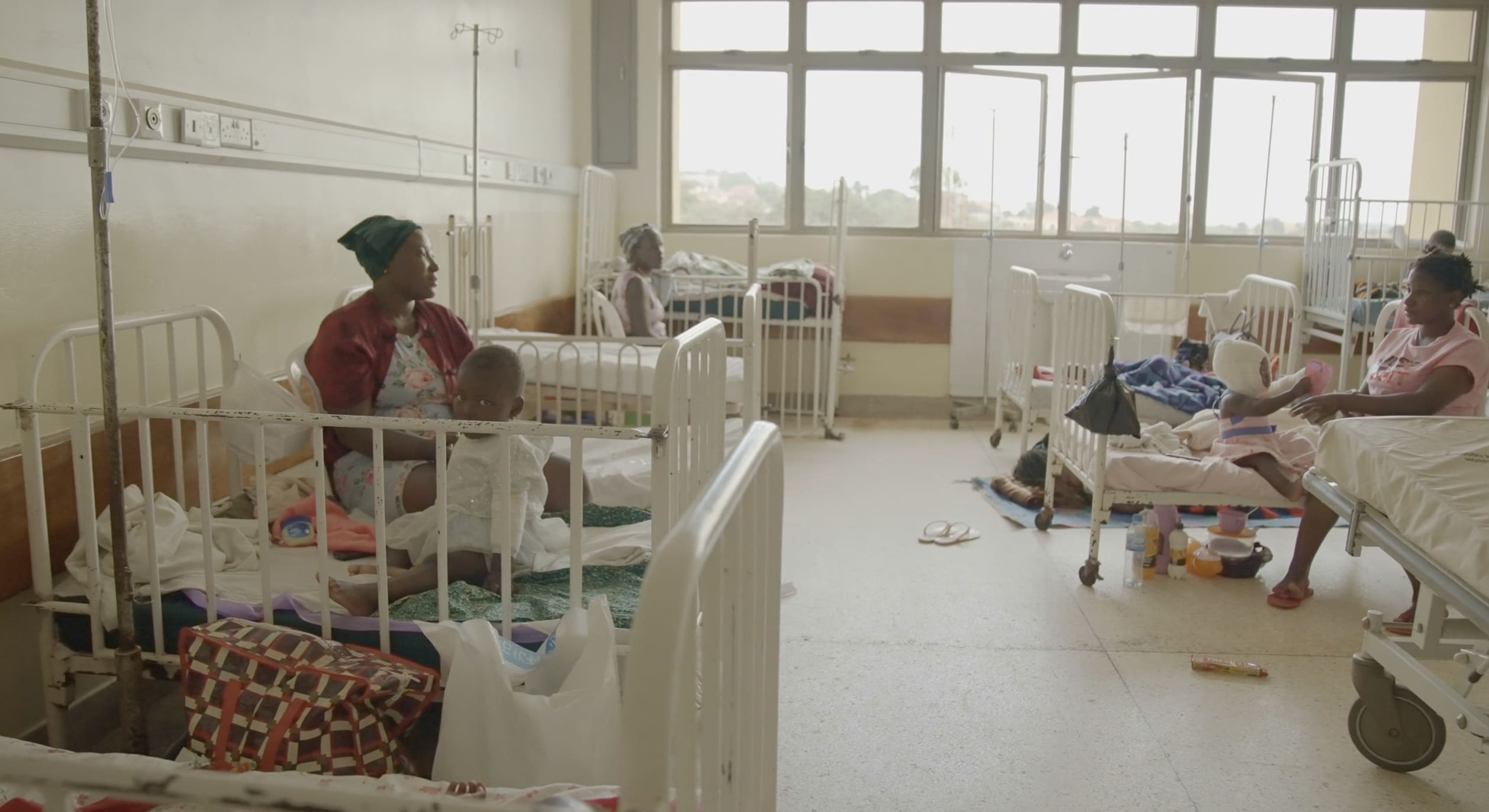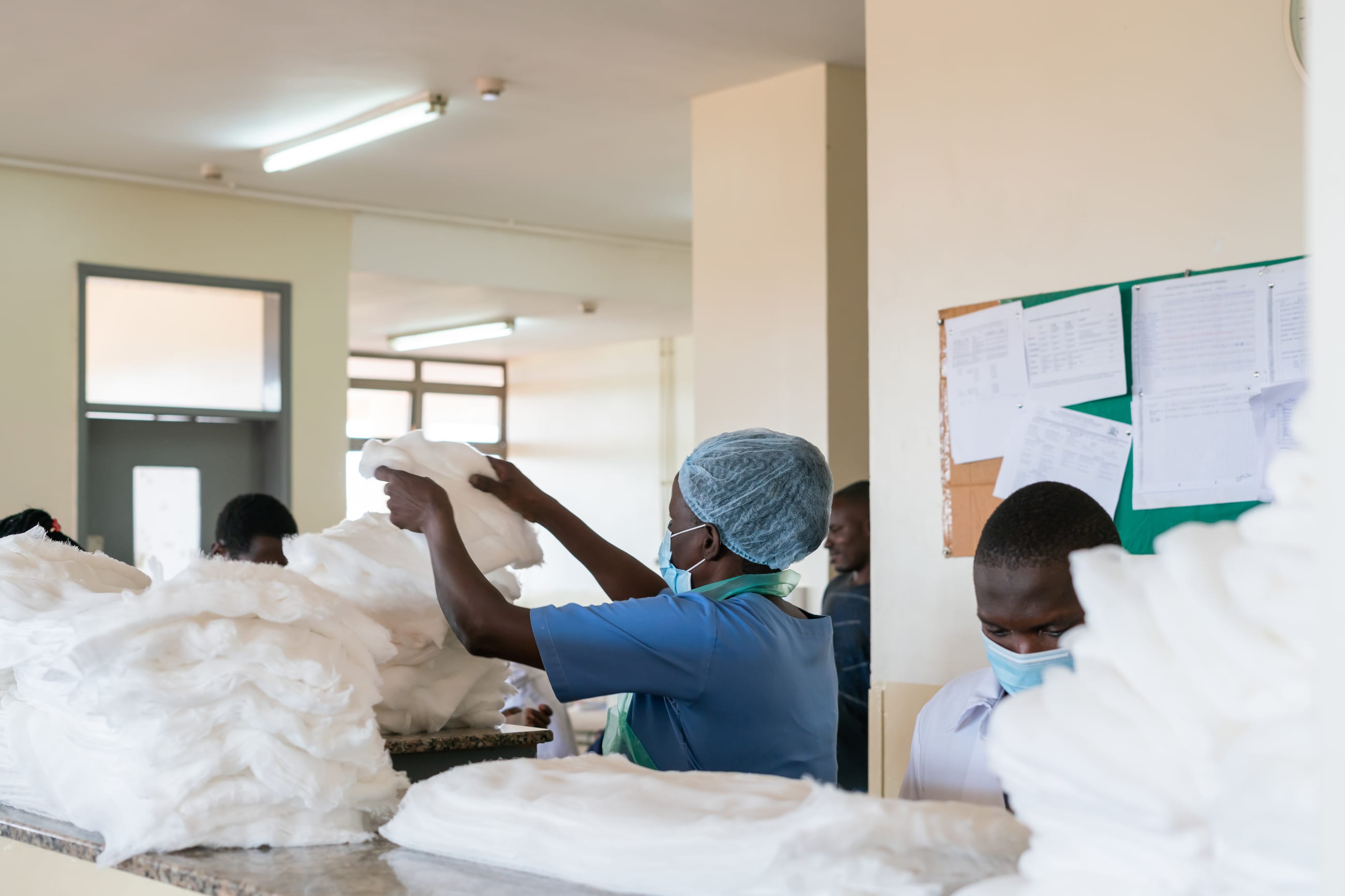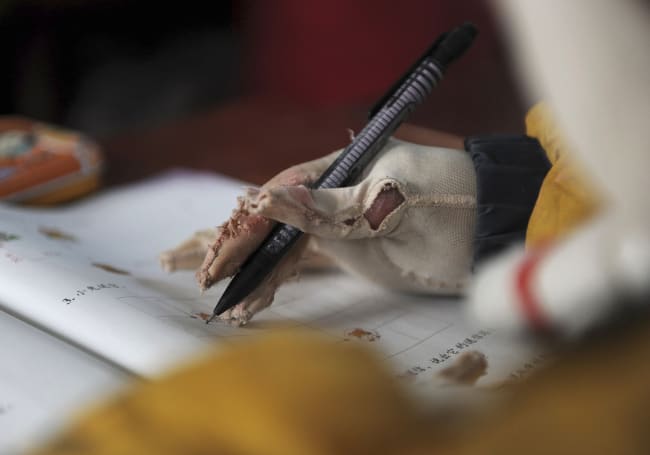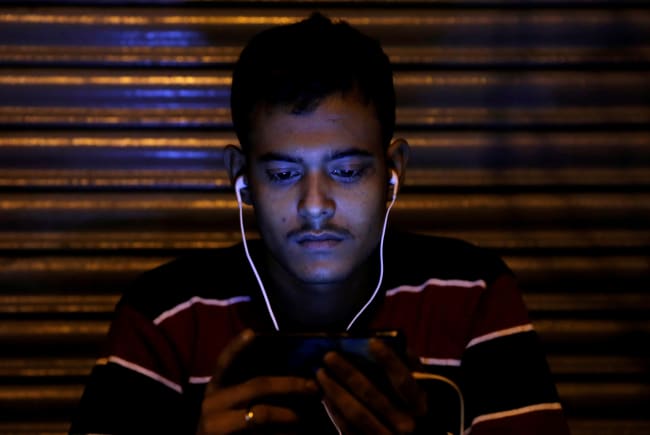Abo Akello* was in the process of completing her coursework to become a nurse in eastern Uganda in the Katakwi District when she fell in love and decided to get married. Soon after, she became pregnant and dropped out of school to take care of her growing family. Abo is now a thirty-six-year-old mother of three children, ages fourteen, eight, and six.
On October 16, 2022, Abo's life changed forever. As she prepared breakfast in her courtyard on an open-flame fire, the family's fuel sat precariously close by — and exploded. The flames caught Abo's clothing. As she ran to remove her clothes, she fanned the fire, prolonging the contact time and intensity of the flame. Eventually the fire consumed her body, severely burning her chest, neck, and face. She did not have access to first aid and her injuries led to thickly scarred burn contractures, adding disability to her disfigurement from the injury. Over the past year, Abo's burn contractures have required a series of surgeries and skin grafts. She is still being treated.
Burns are the fifth most common cause of nonfatal childhood injuries
During her time in the hospital, Abo was not able to take care of her children. Her husband ended up taking them away and leaving her, telling her that she had become too big of a burden for the family. He then added to her trauma by telling her that her scarring and disfigurement would traumatize their children. Abo's mother became her personal caretaker, overseeing her ongoing medical procedures, which have been grueling, leaving her penniless — and hopeless.
The Interplay of Gender and Burn Incidence
Burns are often referred to as a "disease of the poor," and Abo's story is all too common. Burns are largely preventable and primarily affect the most vulnerable individuals in low- and middle-income countries (LMICs), where they are among the leading causes of disability-adjusted life-years (DALYs) lost in LMICs. In wealthier countries, rates of injury — especially occupational injuries — tend to be higher in males than females. In comparison, available data on LMICs indicate that women and children account for at least half of the disease burden for burns. These injuries not only exacerbate existing gender inequalities but also further limit women's ability to pursue their goals and aspirations.
Women perform an estimated 75 percent of unpaid care and domestic work globally. In LMICs, this figure is even higher, at 90 percent. For the 40 percent of the world's population that still relies on open-cooking fires and fires as a heating source, women and children are more at risk given that they spend more time at home within reach of this open-flame risk. Burns are the fifth most common cause of nonfatal childhood injuries.

Women's loose clothing — saris, scarves, shawls, and head coverings — present additional risk factors for burns. In countries like Nepal, during the cold winter months, long scarves can easily catch fire while women huddle around an open flame used as a heat source. Open-fire use varies widely by region within countries, but people living in rural areas as well as crowded urban slums typically rely more on open fires for cooking as well as heating and a light source at night. All these factors make fires essential in the poorest and most vulnerable areas and present a higher risk to those with less access to health care.
Intentional burn injuries also have a disproportionate impact on women. Intentional burns, though underreported and understudied, are caused by acid attacks that are self-inflicted, caused by assault, or used as punishment for breaking social norms. The Acid Survivors Trust notes an incidence of about 1,500 intentional acid burn attacks annually, with 80 percent of victims being women — and an estimated 40 percent of cases never reported. Victims are predominantly married, with low socioeconomic status, limited education, and high emotional and financial dependency on their partners or families. Disputes over dowry, property, finances, or debt and accusations of infidelity often lead to those women being attacked by their partners. The highest rates of acid attacks take place in South Asia and the Middle East.
Time and Money: Additional Challenges to Burn Care and Treatment
Burn patients in LMICs often delay in seeking care because of barriers associated with transportation costs, distance, and limited availability of specialized care. Rose Alenyo, a plastic and reconstructive surgeon at Kiruddu Hospital, Uganda's national burn referral center, notes that "burns may not be considered as a serious illness" when the burn victim survives. These factors leave many vulnerable people suffering in silence as they wait to seek care. These prolonged wait times also contribute to the development of burn scar contractures, severely limiting mobility.
80 percent of acid-attack victims are women—and an estimated 40 percent of cases are never reported
By the time most burn patients arrive at a hospital they require longer, costlier visits: the average hospital stay for a burn patient in a LMIC is thirty-eight days and for a burn contracture patient eleven days. Women frequently bear the greatest economic burden. Alongside caring for relatives, mothers often find themselves spending extended periods in hospitals with their children or other family members who are suffering from burn injuries, resulting in the loss of any income they may have had and leaving their other family without proper care. One 2019 study found that $11.7 billion in South Asia and $6.1 billion in sub-Saharan Africa were lost due to burns. This was equivalent to 0.10 percent and 0.15 percent of gross domestic product, respectively.
If a patient is fortunate enough to quickly get to a hospital with appropriate care available, they could be discriminated against based on their gender. Women in LMICs with a burn injury less frequently receive surgical treatment and more frequently die in the hospital than their male counterparts. Some researchers have suggested that lower rates of surgical care for females are attributable to limited education, literacy, and empowerment in speaking up for their health needs. Gender bias within the health-care system, and primarily male providers prove to be another obstacle for women receiving less surgical care.
What's Next for Gender Disparities and Burns?
Gender-based disparities are significant among burn injury epidemiology, treatment received, and outcomes for women with burns. Burns are not simply a health issue; they're an economic, political, and societal issue. Reducing the inequity will require a comprehensive systems approach.

More and better data are needed for research to further decipher the cultural and contextual reasons for the disparity of burn injuries. There are thousands — maybe hundreds of thousands — of women like Abo around the world. "Without gender-disaggregated data, which distinguishes between men and women, women and girls are effectively invisible," says Caroline Criado Perez. Women suffering from burns are often not counted because they are less likely to participate in the formal workforce in LMICs. In 2018, the World Health Organization supported the development and use of a global burn registry for globally harmonized data collection and increased collaboration between global and national networks to increase the number of effective programs for burn prevention and care. More input into this registry and analysis of the data that we have need to shed additional light on what is happening for women and burns.
The majority of burn injuries are preventable. Addressing them, though, requires a multifaceted approach centered in societal improvement through poverty reduction. As the standard of living goes up, and electricity is provided for cooking and heating, incidence of burns will go down. In the meantime, simple harm-reduction measures, including raising cooking areas, can help prevent unsupervised children from open flames. Communication and awareness campaigns about the danger of burns can help change behaviors to reduce fire-burn risks. Although fire and other causes of injury, including gender-based violence, require distinct solutions, systematic economic development will reduce the high-level risks for women and children.
Increase the surgical capacity workforce, especially women clinicians. By expanding the pool of skilled surgeons and specialists, access to timely care can be improved, resulting in better outcomes and reduced disabilities. The Lancet notes that an estimated additional 143 million surgeries are needed annually in LMICs. Today's surgical workforce would need to double to 2.2 million surgeons, anesthetists, and obstetricians to reach Lancet's target of 80 percent coverage of timely access to essential services by 2030. Investing in surgical capacity will help address this large burden of disease. Additionally, increasing the number of female clinical providers will also help address gender-specific factors that contribute to women receiving inadequate surgical care and experiencing higher mortality rates. Enhanced communication and empathy can also play a vital role in reducing cultural stigmas and barriers that can result in inferior care for women patients.
As the Global Surgery Foundation recently stated, "a comprehensive surgical system has a far-reaching impact on women's well-being." Abo lost her health — and life as she knew it — on that morning in October 2022. Better burn prevention, and access to both immediate and long-term treatment, can help to ensure that the most vulnerable women in LMICs don't unnecessarily have to suffer the same fate.
* Abo's name has been changed to protect her privacy.













